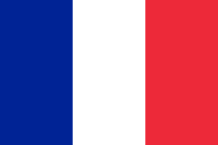GUADELOUPE
 The archipelago of Guadeloupe is comprised of several islands. The two largest islands – Basse-Terre and Grande-Terre – are separated by a narrow channel called La Rivière Salée ; Les Saintes with its 9 islets, two of them, Terre-de-Haut and Terre-de-Bas, are inhabited ; Marie-Galante (158 sq km) ; La Désirade (22 sq km) and several other uninhabited islets. The whole area is 1434 sq km.
The archipelago of Guadeloupe is comprised of several islands. The two largest islands – Basse-Terre and Grande-Terre – are separated by a narrow channel called La Rivière Salée ; Les Saintes with its 9 islets, two of them, Terre-de-Haut and Terre-de-Bas, are inhabited ; Marie-Galante (158 sq km) ; La Désirade (22 sq km) and several other uninhabited islets. The whole area is 1434 sq km.
The centre of Basse-Terre is occupied by a range of mountains among them, Les Mamelles (768m), La Madeleine, Les Monts Caraïbes with its extinct volcano Le Houëlmont and La Soufrière volcano, the highest point of the island (1467m). This active volcano erupted in July 1976 and the inhabitants in the south of Basse-Terre were evacuated. Grande-Terre with its limestone soil is rather flat even if it has some small valleys in Les Grands-Fonds.
The archipelago’s vegetation is varied. In the humid zones, there are, for example, mahoganies, gum trees, chesnut trees, breadfruit trees, bamboos, ferns, creepers, orchids. In the dry zones, there are acacias, manchineels, campêches, bougainvilleas etc. The mangrove grows along the coast, in particular in Grand-Cul-de-Sac-Marin and Petit-Cul-de-Sac-Marin.
About the wildlife, several species of bird are present in the archipelago for example, pelican, hummingbird, egret, heron, black bird or the endangered Guadeloupe woodpecker called Toto bwa. The racoon lives in the forest of Basse-Terre, it is the symbol of the National Park of Guadeloupe. There are also mangooses, agoutis, iguanas, grass snakes, dynastes (the world’s biggest beetle with its 17,5 cm).
Agriculture is an important part of the local economy. It is made up of banana, sugar cane (for sugar, rum or liqueur), various fruits (melon…) and vegetables. Banana, melon and flowers are exported. There is a small production of honey. A local food-processing industry tries to develop.
Tourism developed since the 1980s, 80% of the visitors come from Europa.
On November 4, 1493, during his second voyage to the West Indies, Christopher Columbus discovered the island. The seafarer named it “Guadeloupe”. However, the Carib Indians who lived there after they exterminated the Arawak Indians called this land “Karukéra” (Island of Beautiful Waters).
In the early 1500s, the Spanish tried twice to settle in Guadeloupe but the fierce Caribs chased them out. On June 28, 1635, French settlers, financed by La Compagnie des Indes Occidentales and led by Charles Liénard de L’Olive and Jean Duplessis d’Ossonville landed on Allègre Point located in the present commune of Sainte-Rose. The Amerindians were killed or expeled from Guadeloupe. In 1674, France appropriated officially the colony.
The plantations developed thanks to the labour of thousands of African slaves.
During the 18th century, the British invaded several times Guadeloupe. They occupied it between 1759 and 1763. Many French colonists got richer at that period because the English allowed them to sell their sugar on the American market and import american food and cheap lumber.
The Treaty of Paris stopped the British colonization : France exchanged Canada for Guadeloupe. The island was the most prosperous French West Indies colony. But, during the French Revolution, the English invaded again Guadeloupe. France reacted by sending there soldiers led by Victor Hugues to drive off the British troops. Hugues freed the slaves. Hundreds of settlers royalists were killed (among them many planters), some of them escaped towards other colonies.
In 1802, Napoléon Bonaparte sent to the island General Antoine Richepanse to restablish order and restore slavery. Revolts broke out. The fights were bloody between French soldiers and former slaves. Many rebels committed suicide, other were arrested, shot and hanged. Jean Ignace and Solitude, a Mulatto woman were killed. Colonel Louis Delgrès and his 300 supporters (men, women and children) prefered committing suicide in D’Anglemont Estate in Saint-Claude instead of being again slaves. They became heroes for the Guadeloupeans.
Because of its wealth, Guadeloupe was coveted and invaded again by England between 1810 and 1816. By the Treaty of Vienna, the island became French another time.
Slavery was abolished, in 1848. The settlers hired workers from Pondichéry in India.
Guadeloupe is a Overseas Department of France, since 1946. The island is led by a Regional Council and a Departmental (ex General) Council. Guadeloupe is represented in the French Parliament and a Prefect represents the French government in the island.
Guadeloupeans are French citizens.
Area : 1 434 sq km (553,6 sq miles )
Population : 440 000 inhabitants
Capital : Basse-Terre
Languages : French (official) – Creole
Currency : Euro (€)
People : Guadeloupeans
